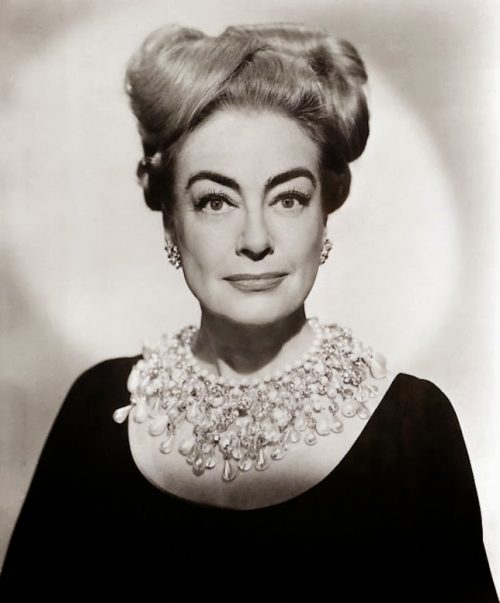Joan Crawford in a publicity still for I Saw What You Did, 1965.
One afternoon I was having lunch in The Greenery, a popular coffee shop which was located in the Ambassador East’s basement level from the late 1960s to the early ’70s. I remember the housekeeper bounding through the entrance, huffing and puffing and waving sheets of paper in the air. She grabbed the stool next to mine and started talking before she even sat down. “Can you imagine? Now she’s demanding an armed security guard to be stationed outside her suite! Day and night, no less! And for what? Nobody even knows who she is anymore. So how could her life be in danger? God! Where does she dream these things up?”
Of course, I knew exactly who she was talking about. Only one guest in the world ever inspired that sort of tirade from the housekeeping staff. “So when’s Miss Joan Crawford arriving?” I asked with a smile.
“Day after tomorrow,” she confided, shaking her head and spreading the three sheets of paper she’d been waving around out onto the counter in front of me. “Just look at this, Stanley! Three single-spaced, typewritten pages of these requests of hers!”
I can only remember a few of them, but they paint a pretty clear picture of their entirety:
- The suite must be filled with flowers.
- One dozen down pillows for her bed.
- Special linens, woven with a thread count no lower than 360 per square inch.
- Every single known brand of aerosol spray air freshener.
- A detailed list of cleaning supplies, with special attention to disinfectants.
- A case of Pepsi (out of deference to her husband, who ran the Pepsi-Cola organization).
- Miss Crawford must never run out of 100-proof vodka.
I was just the piano player and never had to deal with any of her outlandish demands, so I used to love it when she came to the hotel and set the place abuzz. I never knew another star who could stir people up the way she did, and on top of that, she was fascinating to watch: all her moves so melodramatic.
When she was in Booth One, she was always on at least one telephone. On one occasion, Kup — the famous Chicago columnist — found himself tangled in the cords from the three telephones used simultaneously at the table. “Joanie,” he always said, “you’ve got to stop talking. It looks like we’re eating at a table filled with spaghetti!”
By the time I met her, her last husband, Alfred Steele — major domo of Pepsi-Cola — had died, and her movie career — or what was left of it — was nearly over. Her last four pictures were quick thrillers. She took them seriously though, as she took everything. In Joan’s mind, she was still the big movie star and demanded to be treated like one.
A few years later, shortly before I left The Pump Room, she was back. Only this time, she was all alone seated in Booth One. During one of my breaks, I went by to say hello and she invited me to sit with her. She still looked as glamorous as ever and couldn’t have been nicer. As we talked, she sipped from a large water glass. At least I assumed it was a water glass, until Victor — the maître d’ — revealed that Miss Crawford always demanded and got 100-proof vodka without ice. Her “water” could knock out a Cossack!
But it seemed a little sad that she was all alone. Her last film, which was a low-budget potboiler called Trog, had been released a few years before in 1970.
As I left the booth and walked back toward the bandstand, I thought to myself, “Is this how it all ends: One of the greatest film stars of her generation sitting in solitary glamour in an otherwise empty Booth One?”









